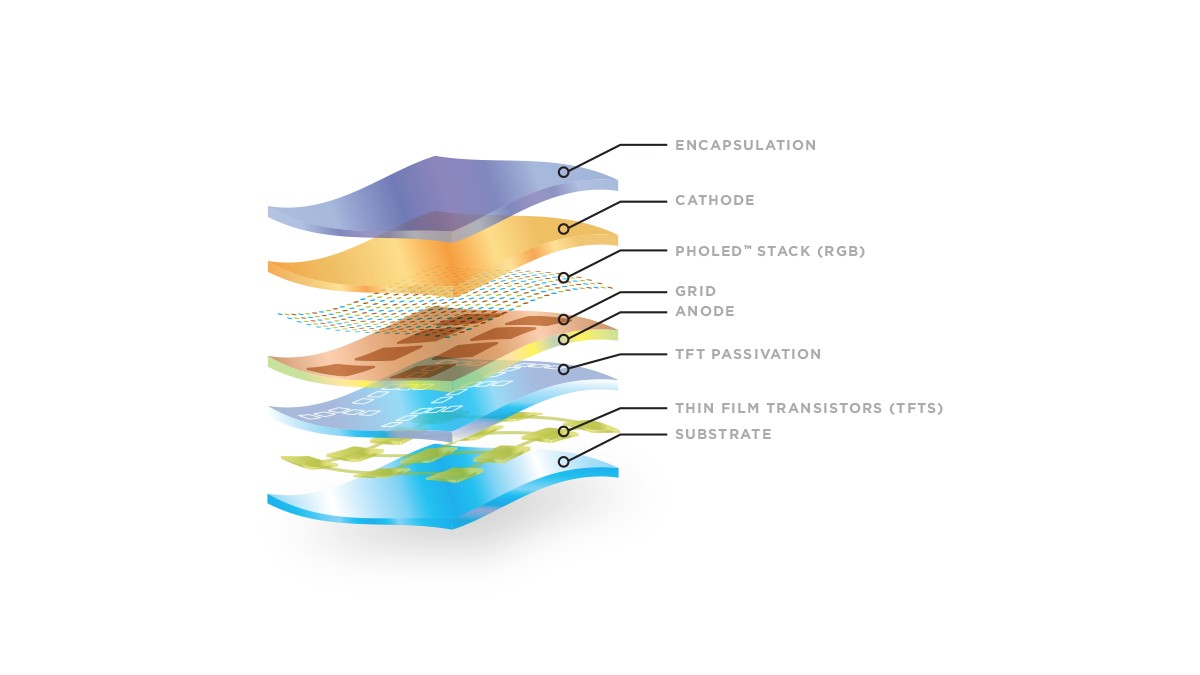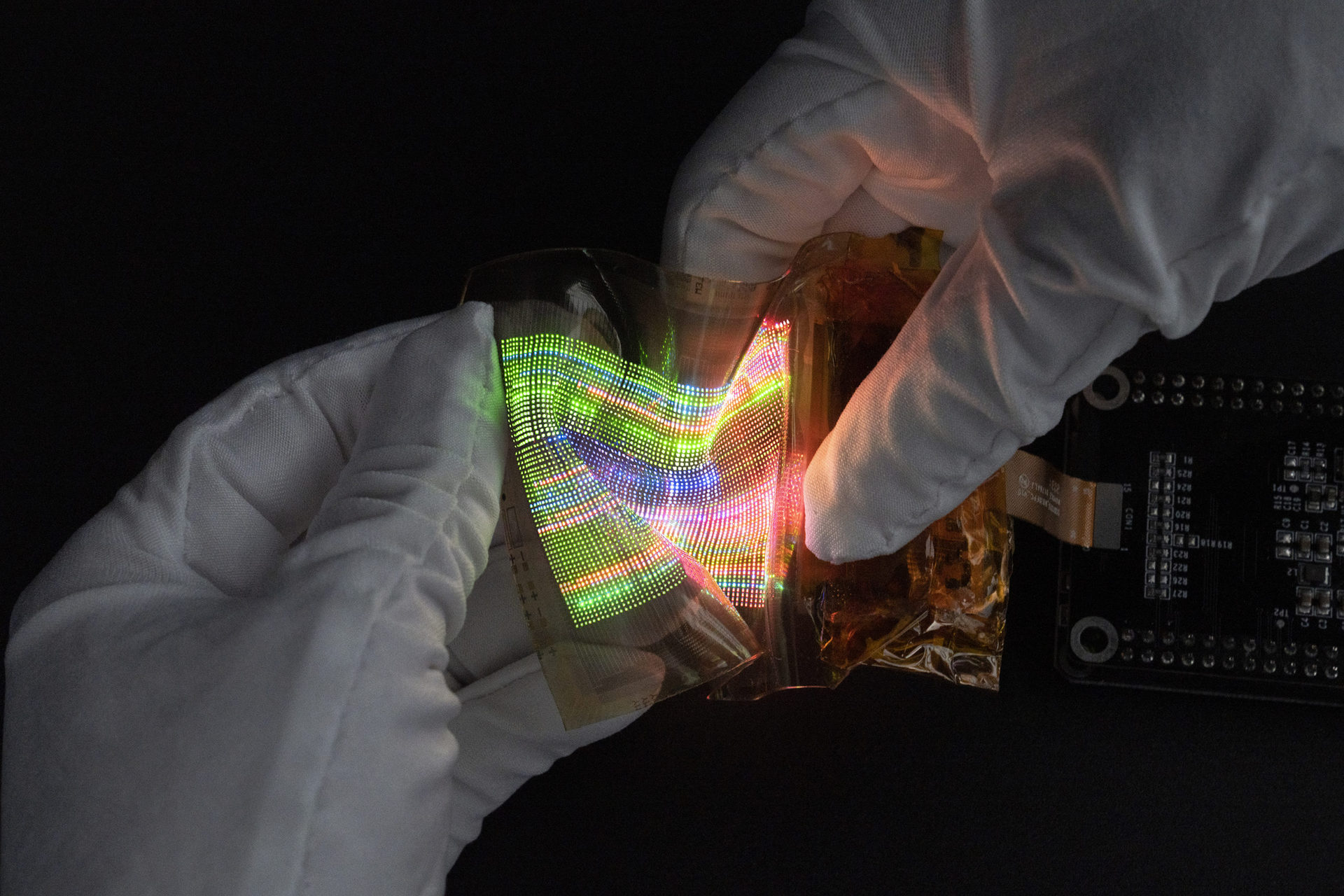How do folding screens actually work?
Ryan Haines / Android Authority
Folding screens have become a common sight in recent years, thanks in large part to Samsung’s two lines of foldable phones, the Z Flip and Z Fold. As other manufacturers join in, foldable device prices are quickly going down, promising a new age of personal computing. But how do folding screens actually work?
Whether you’ve always been curious about how folding screens work or have yet to consider it, we’ll give you a crash course in foldable displays and the cool tech that makes them possible.
Also read: Display specs and terms explained: Resolution, contrast, color gamut, and more
Folding screens: The basics
All displays — rigid or flexible, flat or curved, rollable or folding — work roughly the same way.
Simply put, millions of specks of color combine to form the images we see on screen. There are different ways to achieve this, resulting in the various displays you see out there, including LCD, OLED, and, more recently, micro-LED and mini-LED.
All those specks of color sit on a layer of material called the substrate. For many years, the substrate has been a thin sheet of glass — rigid, fragile glass you can only flex so much before it shatters.
Then over the last decade, display manufacturers produced display substrates made of flexible plastic that can bend without breaking. Plastic-based displays made possible the creation of the first phones with curved displays, like the Galaxy Note Edge of 2014.
The flexible substrate is only part of the equation. Scientists and engineers had to solve some ridiculously hard problems.
As technology advanced, display makers figured out ways to increase the amount of flex they could safely build into a screen. Crucially, they also solved the problem of durability, allowing screens to bend thousands of times without breaking. Eventually, this path led us to today’s folding screens, which can fold almost like a sheet of paper.
Manufacturers have been teasing folding screens for over a decade, but the first folding phones only came out in 2019. There’s a reason folding screens needed so much time to mature — or more accurately, there are many reasons for this.
The flexible substrate is only part of the equation. Scientists and engineers had to solve ridiculously hard problems like manufacturing substrates that are light and flexible but can withstand years of mechanical stress; ensuring that all the bending and folding doesn’t affect image quality over time; creating an equally flexible protective layer for the screen; and making sure that all the other tech that goes into the display still works. When all this was done, other smart people had to devise ways to incorporate the flexible displays into folding phones while maintaining the insanely high standards we expect from our electronics. A tough job indeed.
A closer look at how folding screens work
Before we look at the individual components of a foldable screen, it’s important to note that all folding screens you see on the market today are of the OLED variety. OLED screens do not have a backlight like LCDs — instead, the pixels themselves emit light when power is applied to them. Because of this, OLEDs can be made about 30% thinner and lighter than LCDs. Coupled with other benefits over LCD, OLED is the first choice for flexible screens, but flexible LCD displays do exist.

To understand how foldable OLED displays function, it’s helpful to visualize the display as a very thin (and probably not very tasty) layer cake. Each layer of this high-tech cake has a specific role. These layers are laminated together in a very thin package that’s fractions of a millimeter thick. Let’s go through them.
- Substrate layer — Also called the board, this is the very base of the screen, which supports all the other layers. On a flexible display, the substrate is made of plastic or, less commonly, metal. Most flexible screen devices today use a substrate made of a polymer plastic called polyimide (PI). In addition to being flexible and insulating, polyimide features h igh mechanical strength and thermal stability.
- TFT layer — Applied on top of the flexible substrate, the TFT (thin-film transistor) layer controls power delivery to each pixel. Think of it as a “power grid” that connects all the pixels in the display. On an OLED screen, unlike on LCD, each pixel can be controlled individually, allowing for high contrast rates and lower power consumption.
- OLED layer — The light-emitting layer, made up of individual pixels, each of which comprises red, green, and blue subpixels. Each pixel can hit a certain color and luminosity by varying the amount of power its subpixels receive. In turn, pixels combine to form the image we see on the display. The OLED layer is made of several sub-layers, including a cathode, an anode, and a layer of organic light-emitting material sandwiched between them.
- Cover layer — Also called the encapsulation layer, this is the layer that seals and protects the other layers. It’s also the layer users touch when they interact with folding screens. In terms of materials, the cheaper option is polyimide (same as the substrate), while more recently, we’ve seen manufacturers adopt ultra-thin glass (UTG). UTG is tougher than plastic and feels more like regular glass, while still being able to bend. UTG is what Samsung has been using on the latest Z Flip and Z Fold.

What else should I know about how folding screens work?
Folding screens can be of the in-folding or out-folding variety. On an in-folding display (for example, Galaxy Z Flip 3), the display is hidden inside the device when folded, which helps with durability, but it does tend to create a slight crease on the screen. On an out-folding display (like the Huawei Mate XS 2), the display bends around the outside of the device when folded. That leaves it exposed to scratches, but it provides a crease-free aspect.
Also read: The best foldable phones you can get
Folding screen devices we’ve seen so far only have one fold, but manufacturers have shown off concepts of devices that fold twice or even more. Here are some Samsung designs that fold twice in an “S” or a “G” configuration.
Not all flexible display devices fold. We’ve seen devices with rollable displays that roll up and disappear inside the device’s body. Examples include the Oppo X 2021 rollable phone or LG’s crazy OLED R rollable TV.
The display is a key aspect of how folding screens work, but it’s not the only one. The hinge may be just as important to the user experience. Manufacturers have poured a lot of resources into ensuring that hinges in their foldable products work smoothly and consistently, have the right amount of “snap,” and provide a smooth surface for the display to sit on.
Another key factor is durability. By definition, foldable screens feature moving parts, which opens up the possibility of water, dust, and other contaminants entering the device. Indeed, we’ve seen issues with debris getting lodged below the screen on some devices, which ruins the user experience and can damage the screen.
Also read: What is screen burn in and how can you prevent it?
Numerous manufacturers have already released or at least teased foldable screen products, including phones, laptops, and even TVs. It’s easy to envision a future where tablets, wearables, gaming consoles, and even home appliances feature screens that bend. Innovation will also come from stretchable, wearable, and even skin-embeddable displays. In the meantime, as more resources are invested in the technology, folding screens will only get better.
For all the latest Technology News Click Here
For the latest news and updates, follow us on Google News.

